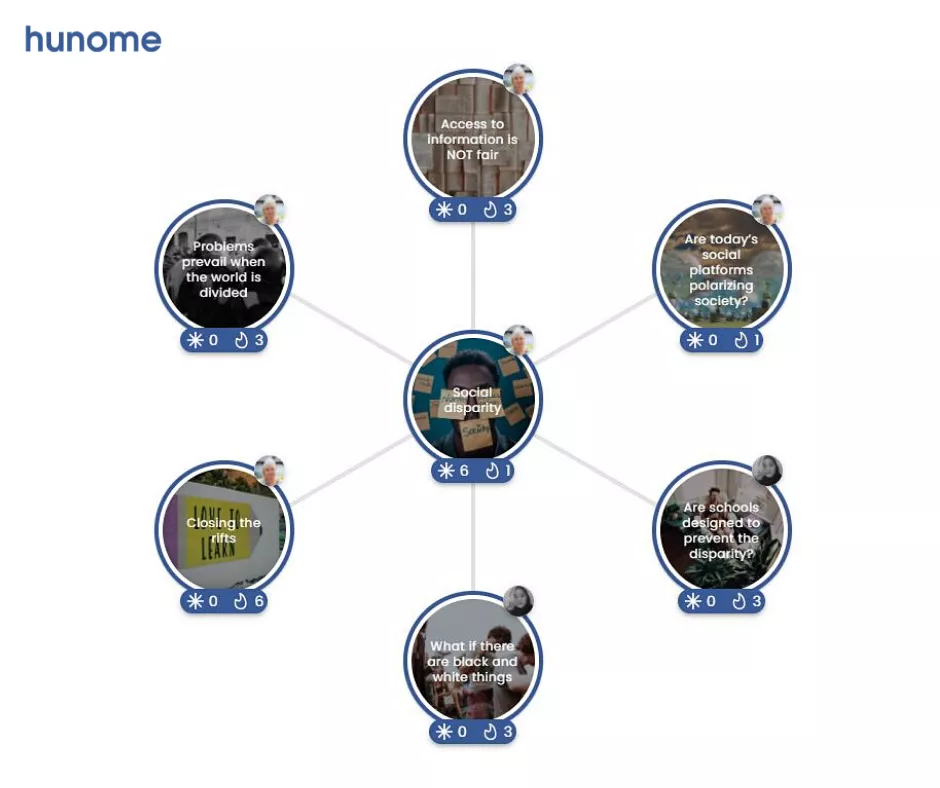Information disparity: Is the world growing further apart?
Last year, we saw many issues that divided the world. The US presidential race, the world-wide Black Lives Matter movement, masks, to name a few.
Of course, this extreme polarization itself isn’t the issue. There will always be people at either end of the spectrum of any debate. Information disparity lies with the lack of nuance. The ‘you’re either with us or against us’ attitude.
We find ourselves in a very black or white world without the many shades of gray that color any healthy debate. Complex issues are boiled down to simply ‘For’ or ‘Against’ and we find ourselves growing further away from those who have a different perspective.
But how have we got to this point, and how can we fix it?
Social media advertising breeds information disparity
Mika Raulas talks about the social media advertising model in his blog. Social platforms package up data on users and sell super-targeted advertising to companies who want to reach their perfect customers.
But these algorithms aren’t designed with the individuals using the platforms in mind, rather those who want to target them.
This is why you often see the same type of content you’ve engaged with displayed over and over again. The results are an echo chamber where very specific views are played back to the individual and amplified through their network.
When your particular brand of thinking is the main stance on a subject, there is little space for diversity of thought.
Information disparity hinders problem-solving
Segmented perspectives are great for advertisers but not so good for problem-solving.
When we consider wicked world problems of the world and the systems thinking needed to approach them, polarization makes it harder to come up with a solution. I talk about the future of humanity and how a holistic view helps us understand the full problem, but also how changes to one component affects other areas.
On the other hand, a narrower view removes our ability to address these types of problems. We become so focused on our own view that we do not consider the big picture and forget about exercising our curiosity or empathy.
For example, lack of fair access to education is a global, wicked problem and a symptom of social disparity. Improving access to education requires exploring every perspective to build a better understanding of the issue.
Diversity in perspectives challenges our own thinking and encourages us to view the world differently. It can even make us smarter. It’s here where creativity and innovation are born.
Locking information in silos breeds information disparity
However, even gathering different perspectives to further our thinking faces information disparity.
In today’s world, information is fragmented or held in silos. You might watch a video, read an article, and browse the relevant Wikipedia page to understand an issue. But you may never get access to academic research on the topic or have sight of someone’s private musings.
Pulling together information to get an accurate picture of things takes time and money. Gaining understanding becomes about those who have the ability to do so and those who have not. This also limits the scope of design, problem-solving, and decision-making to be geared towards those who have, which widens the gulf further.
If we want to close the gap, we must stop wearing our differences as badges and start embracing diverse points of view. Once people can be brought together around a complex issue, we can start building a better society.
A social disparity SparkMap on Hunome
Above are just some ideas on the relationship between access to information and social disparity. Come add your own to help build a multidimensional understanding of social disparity, access to information and many other themes.


